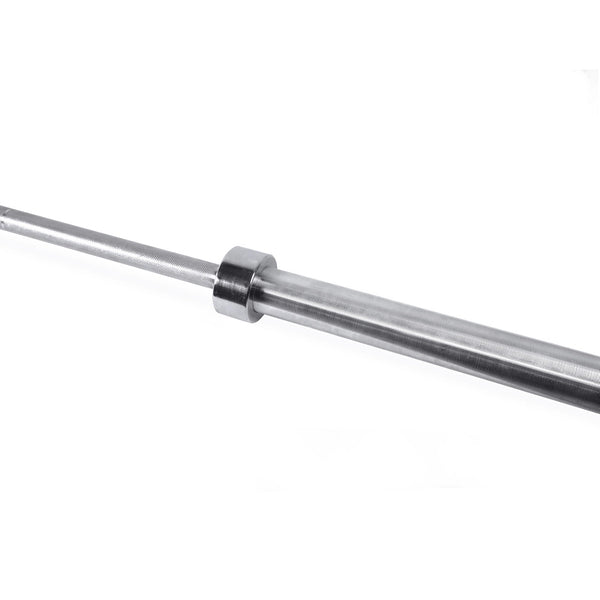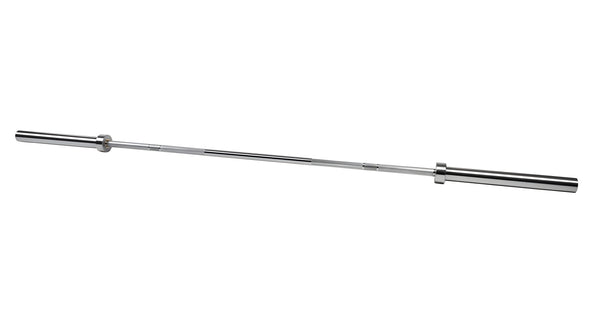Your Cart is Empty
May 23, 2024 3 min read
The deadlift is a fundamental part of any strength-training program. It's a compound movement that engages multiple muscle groups, making it one of the most effective exercises you can do. When done correctly, it helps to not only build muscle and strength, but also increase flexibility and balance. The deadlift is also great for developing core strength and stability.
Shop The Collection: BarbellsThe deadlift is a relatively simple exercise, but there are a few things to consider when performing it. One of the most important considerations is the weight you choose. Choosing the right weight is essential for getting the most out of your deadlifting session. Here we’ll look at how to choose the right weight for deadlifting.
 Shop The Gear: CAP Barbell Olympic Chrome Bar, 7-ft, $81.99 USD
Shop The Gear: CAP Barbell Olympic Chrome Bar, 7-ft, $81.99 USD
When first starting out, it’s important to start light and progress slowly. Using too much weight too soon can lead to poor form and put unnecessary strain on your body. You want to focus on perfecting your form before adding more weight. When you feel comfortable with your form, then you can begin to add more weight. For most people, this means starting with an empty barbell and gradually working up from there.
Shop The Collection: BarbellsYou don’t have to rush into adding more weight. Take your time and focus on mastering the basic form before trying to lift heavier weights. This will help ensure that you’re using proper form and technique when lifting, which can help reduce the risk of injury.
 Shop The Gear: COREFX Chrome Olympic Barbell, $335.99 USD
Shop The Gear: COREFX Chrome Olympic Barbell, $335.99 USD
Before attempting to lift a certain weight, it’s important to know your limits. If you’re a novice lifter, start with light weights and build up as you get stronger. Don’t try to lift more than you are capable of, as this can lead to injury. Listen to your body and don’t be afraid to take breaks if needed.
You should also make sure you’re using proper form when lifting. This can help prevent injury and ensure that you’re getting the most out of each rep. If you feel like you’re struggling to keep good form, reduce the weight and focus on perfecting your technique before progressing.
Once you’ve mastered the basics, you can begin to work up to your max weight. Start with lighter weights and gradually increase the weight until you reach your max. As you increase the weight, make sure you’re still using proper form and technique. Keep in mind that your max weight may change over time, so you should be prepared to adjust your weight accordingly.
It’s also important to remember that your max weight can vary depending on the type of deadlift you’re doing. For example, a sumo deadlift requires less weight than a conventional deadlift. Knowing the difference between the two can help you determine the best weight for each type of lift.
Finally, it’s important to be realistic about your goals when choosing the right weight for deadlifting. If you’re just starting out, it’s unrealistic to expect to be able to lift the same amount of weight as someone who has been lifting for years. Set realistic goals for yourself and work toward them gradually. Don’t be afraid to ask for help or advice if you need it.
Choosing the right weight for deadlifting is an important part of any strength training program. Start light and progress slowly, and be sure to use proper form and technique. Know your limits and be realistic about your goals. With the right approach, you can get the most out of your deadlifting sessions.
Shipping Protection gives you peace of mind while saving you time and money.
Shipping Protection provides coverage for eligible orders that are lost or damaged in transit, or stolen after delivery has been confirmed by the carrier. MAGMA Fitness, through its partners, administers the protection program and may receive compensation for these services. Coverage is subject to the terms, conditions, and exclusions outlined in our Shipping Protection Terms & Conditions.